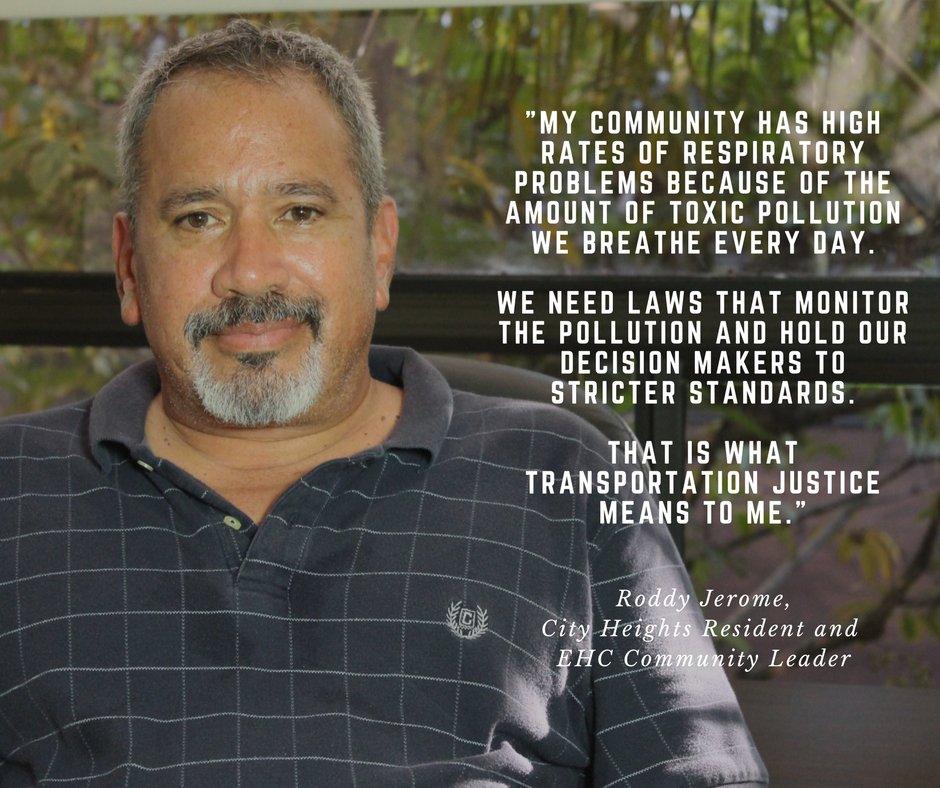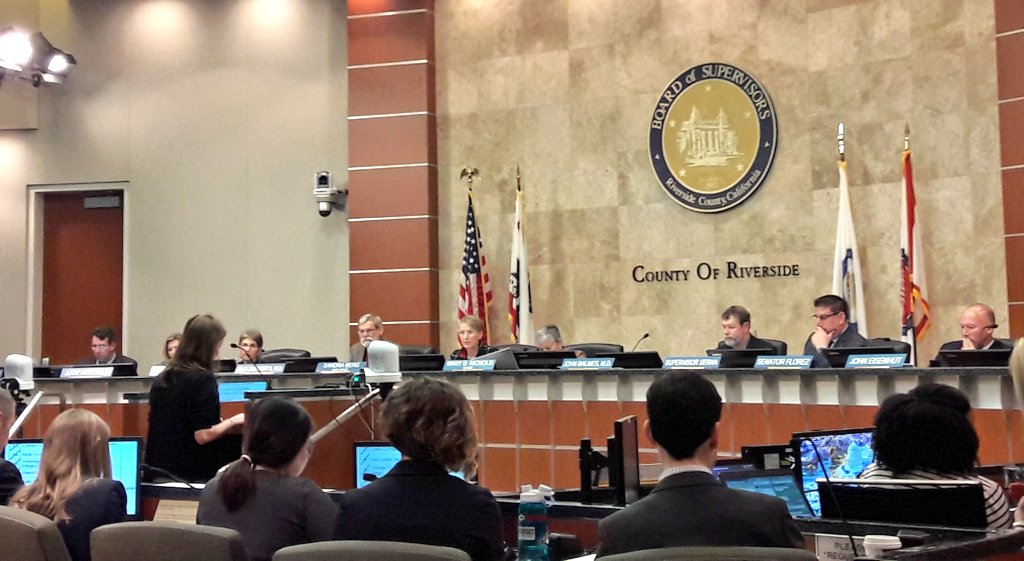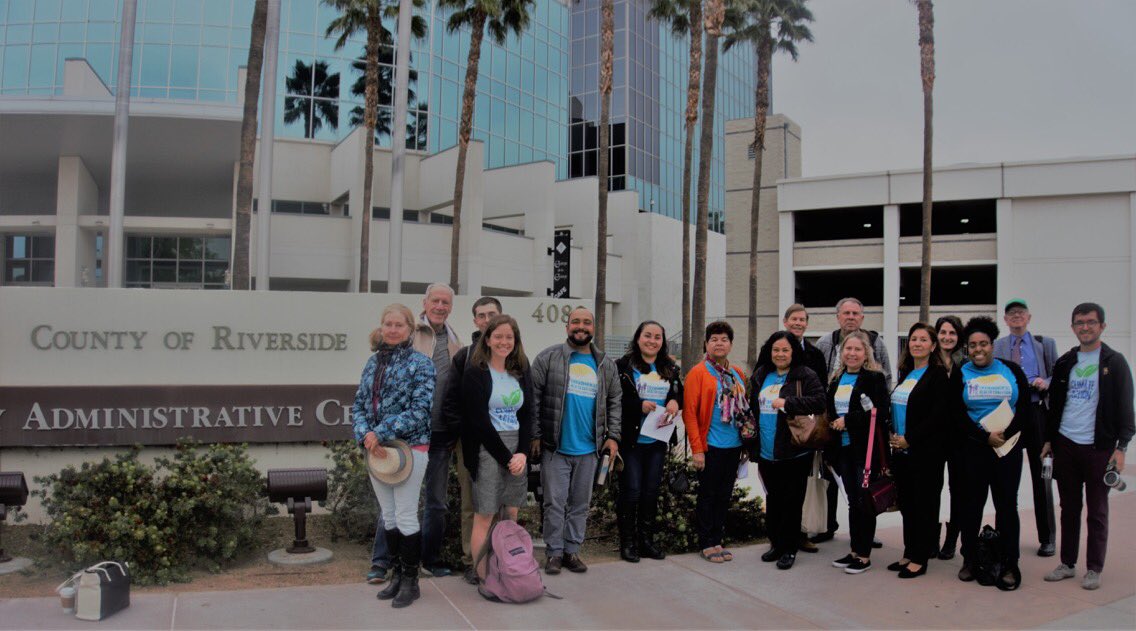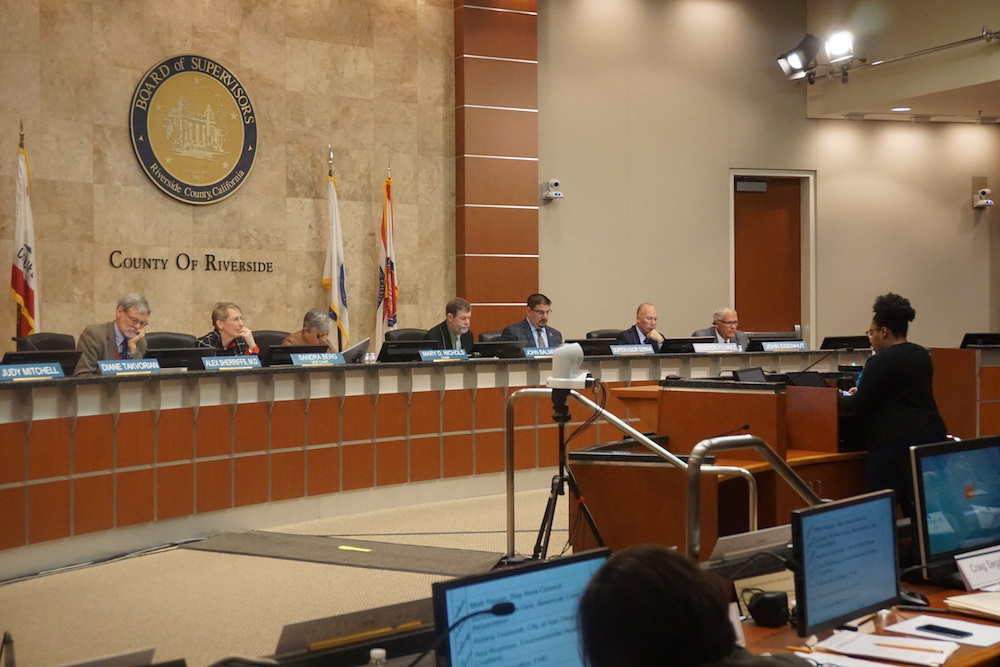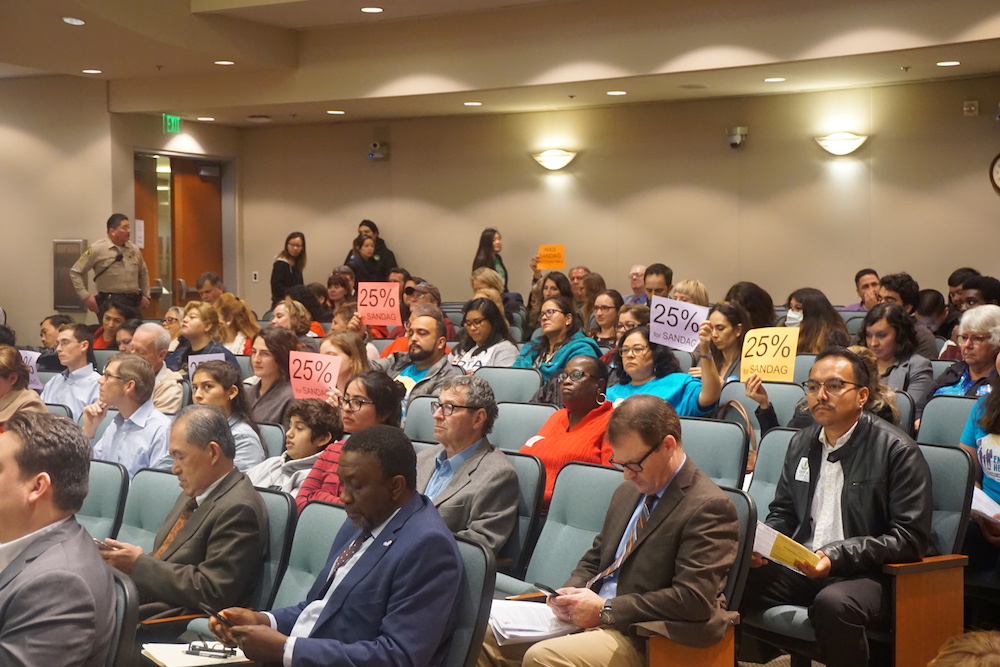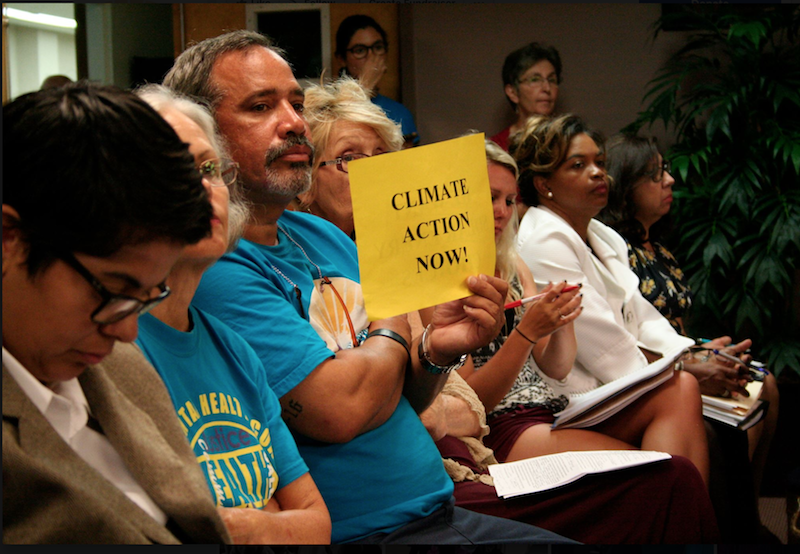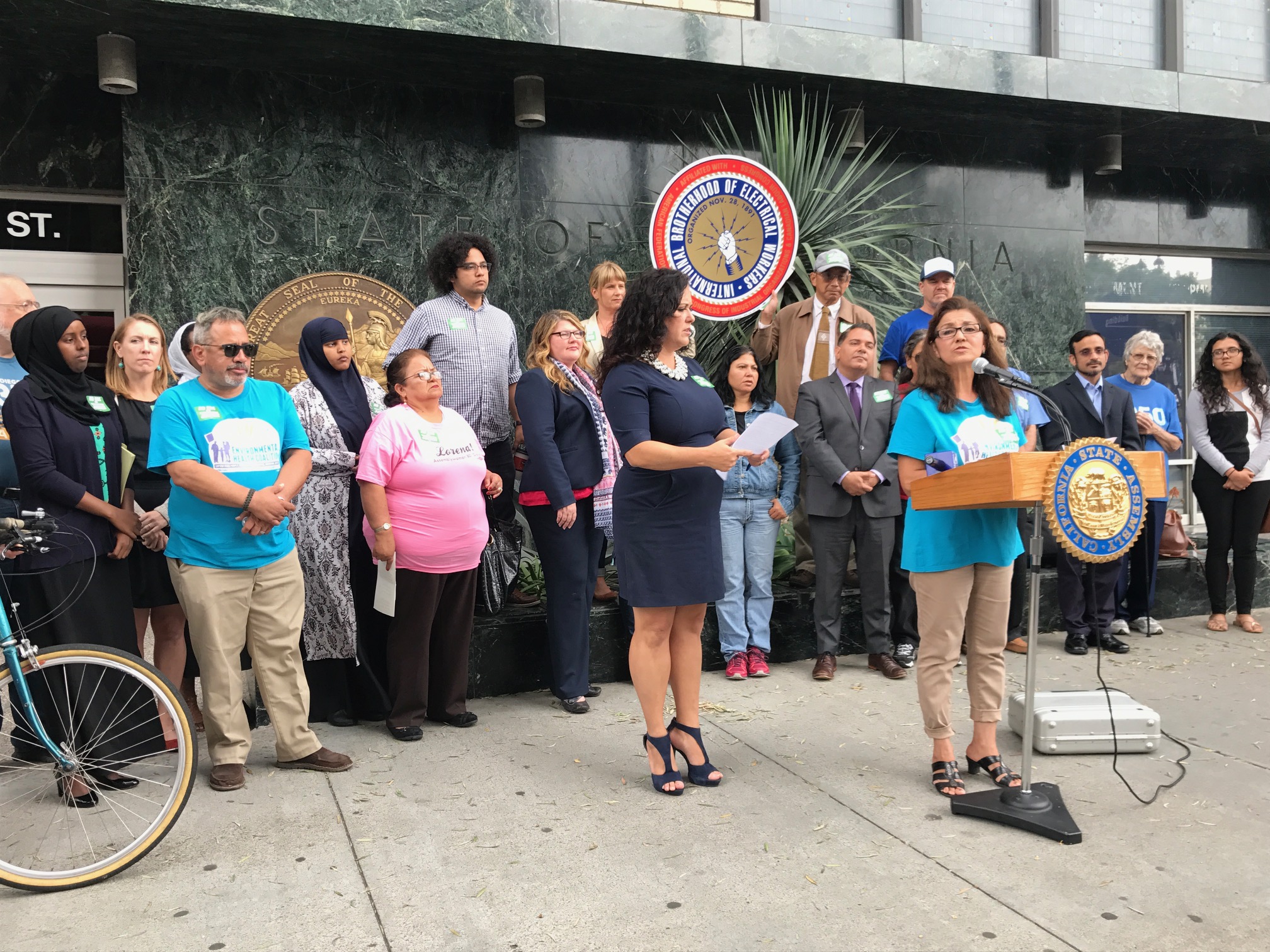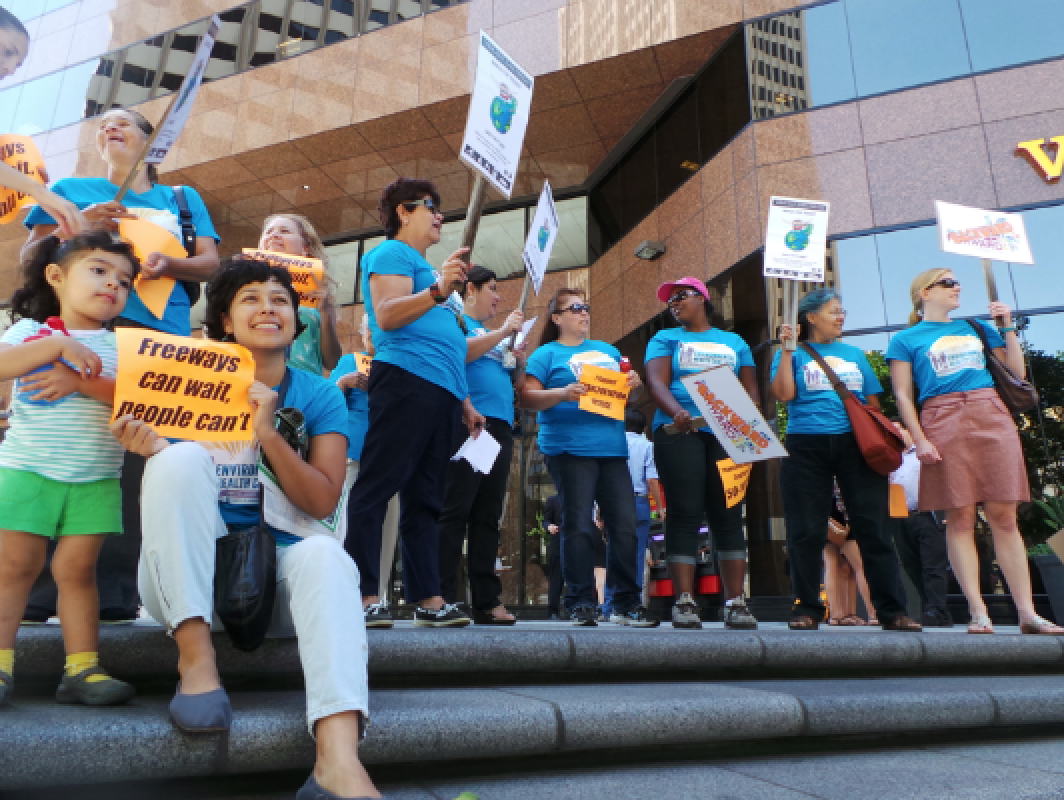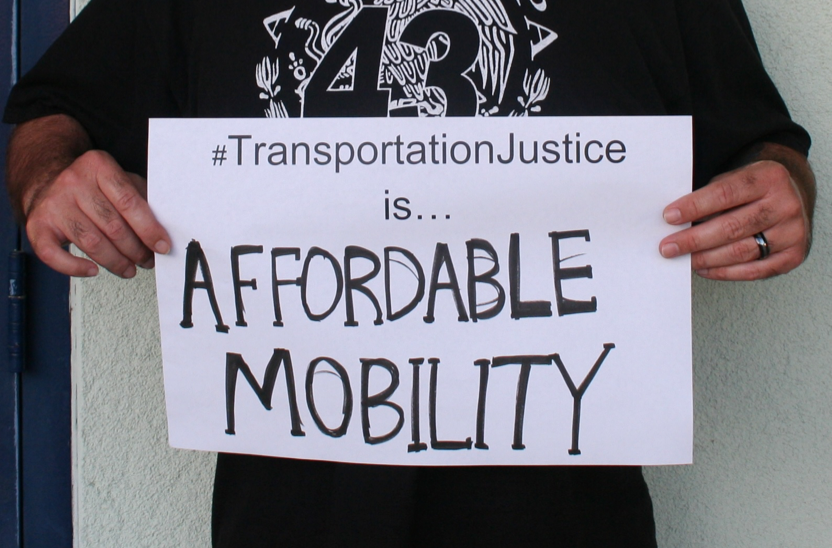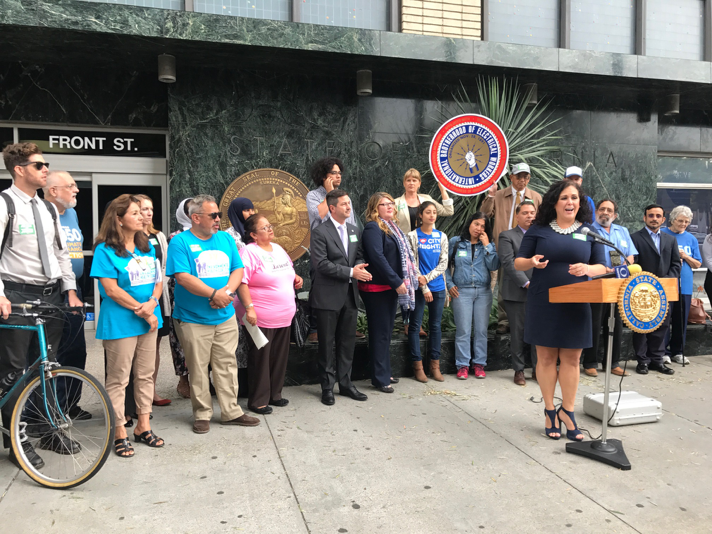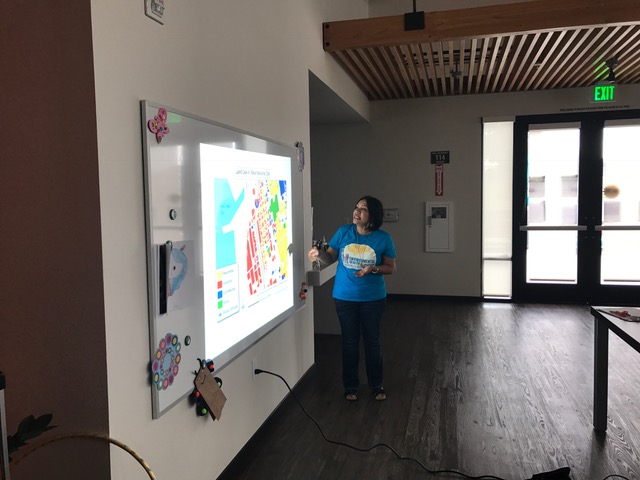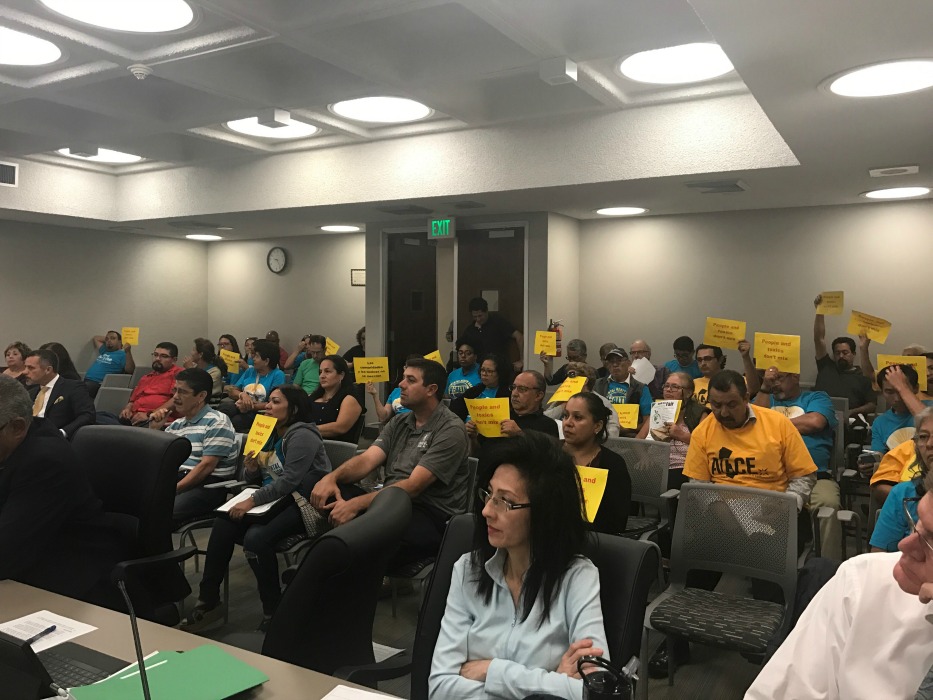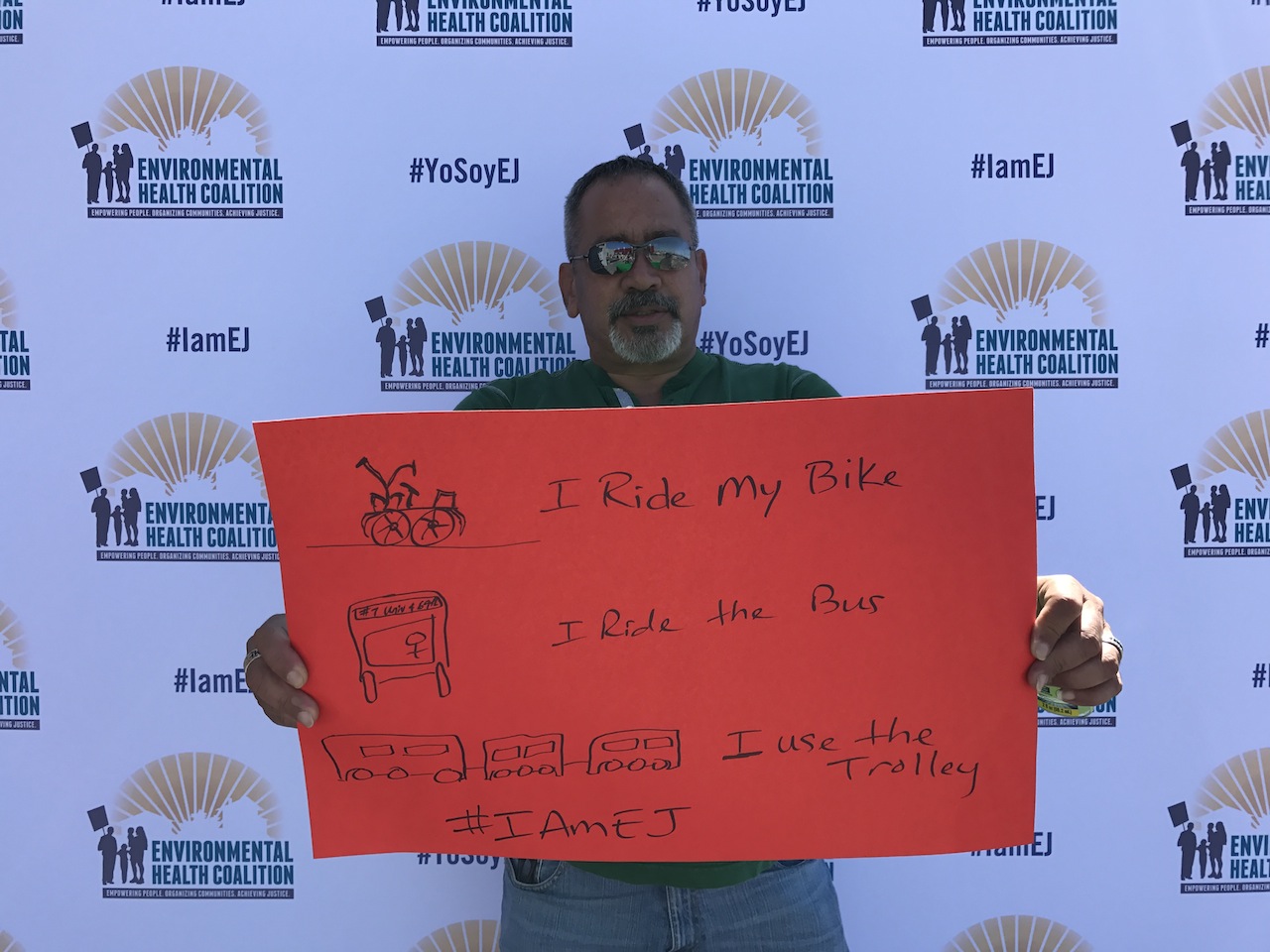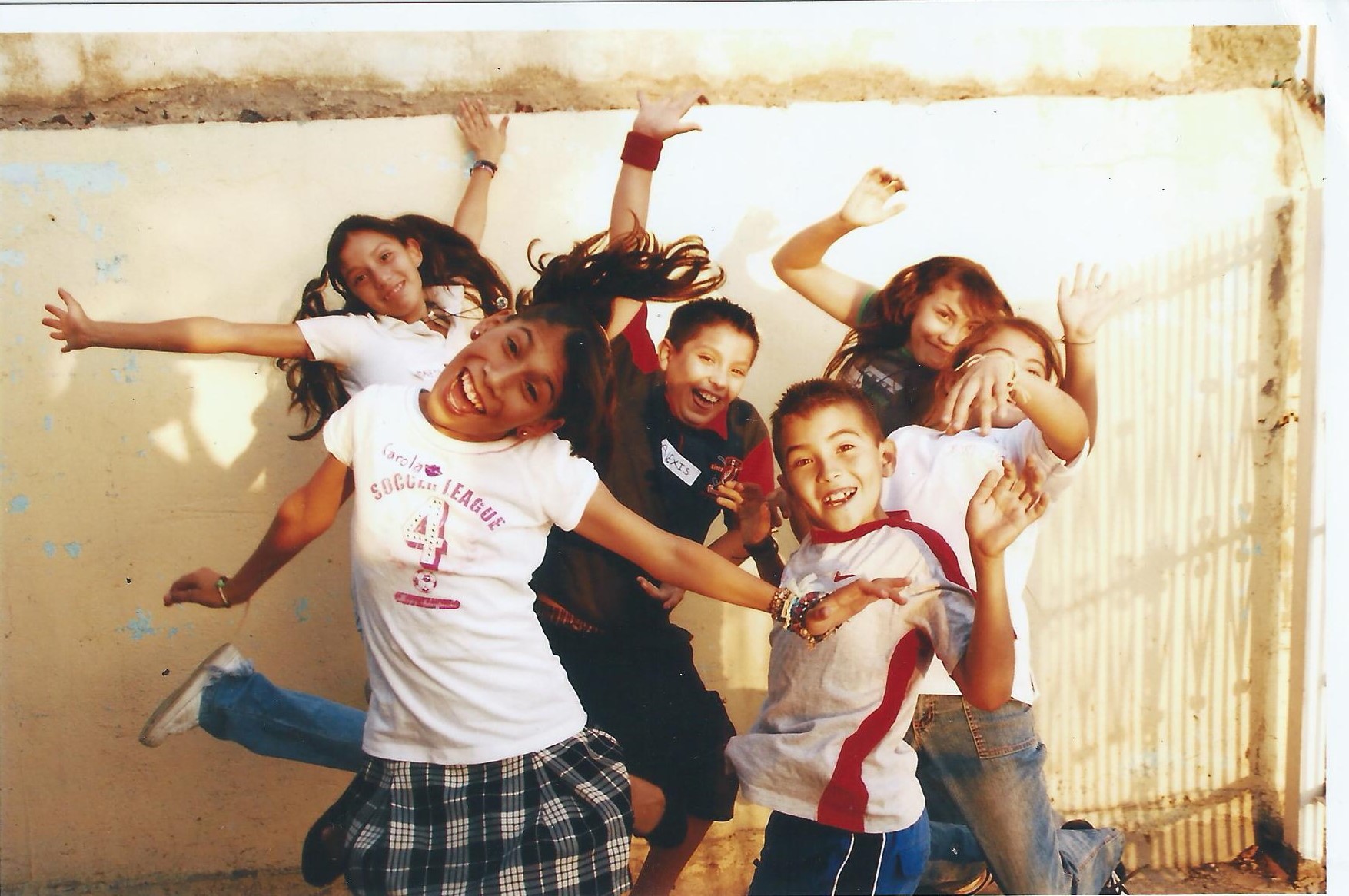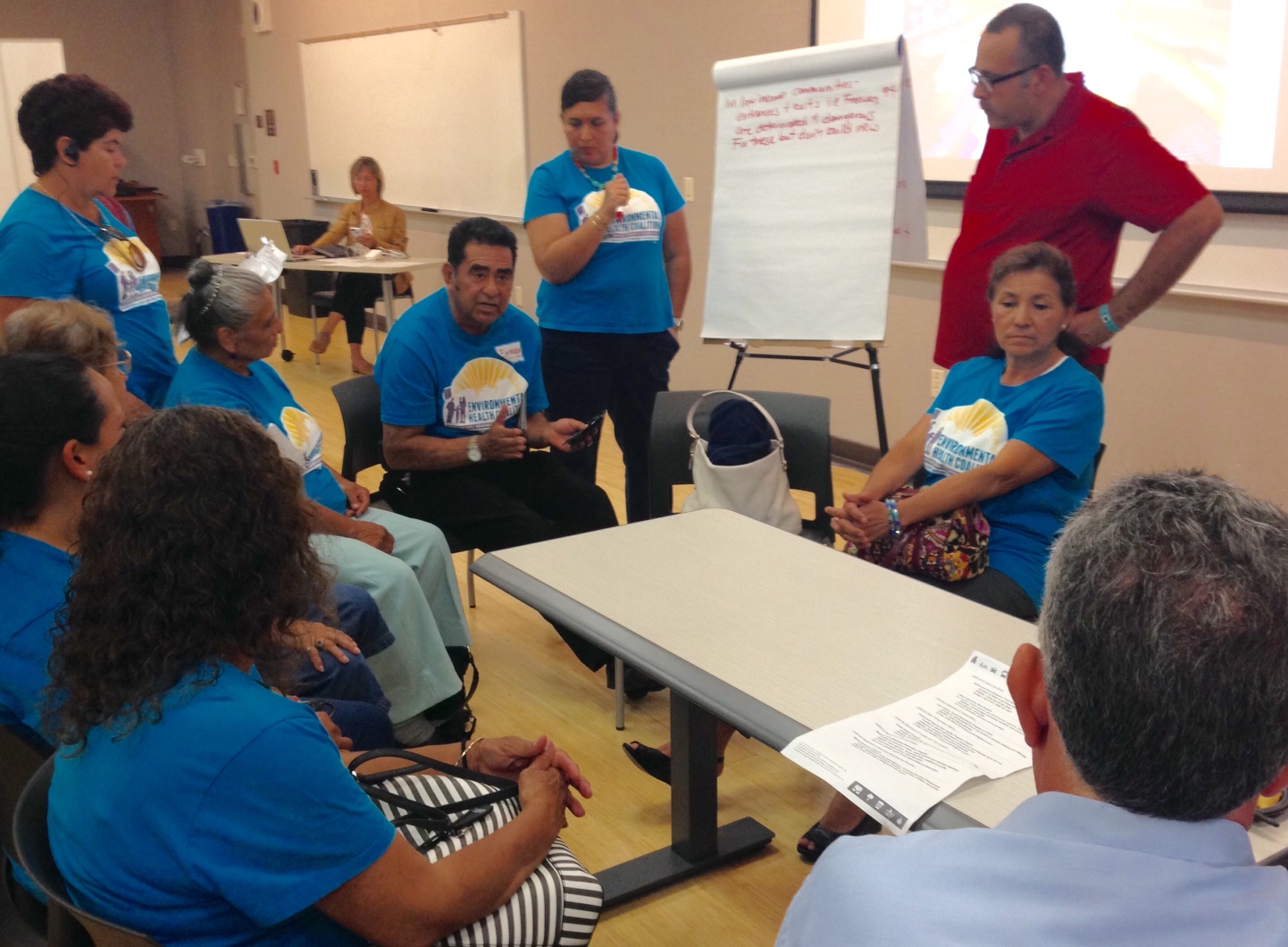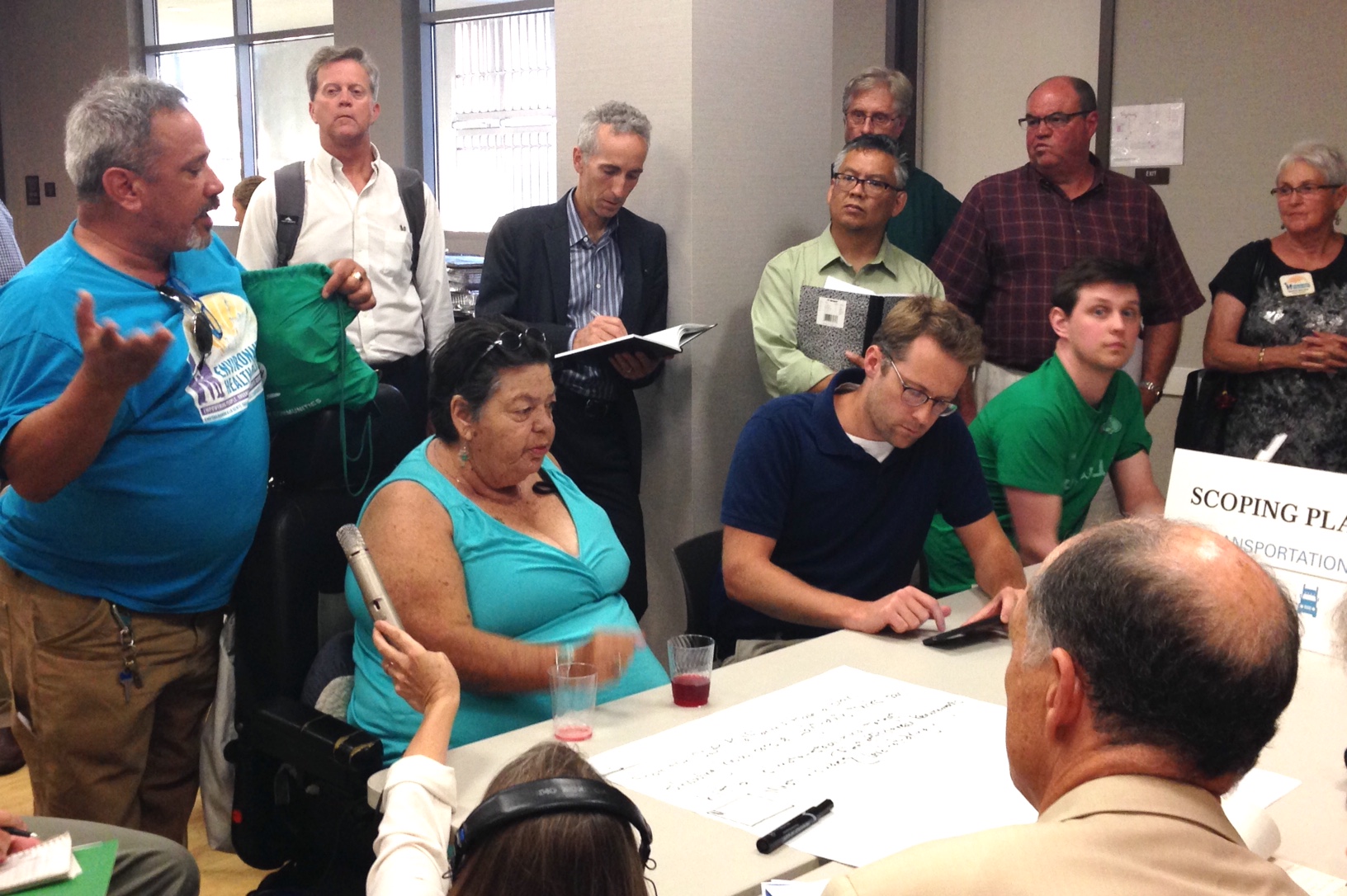On November 8, we're voting no on Measure A to protect our children’s health. Executive Director Diane Takvorian explained in the San Diego Free Press why San Diego should say no to a deceptive 40-year tax increase that pays for freeway expansion and air pollution.
Click here to read her full article on the environmental justice argument against Measure A.
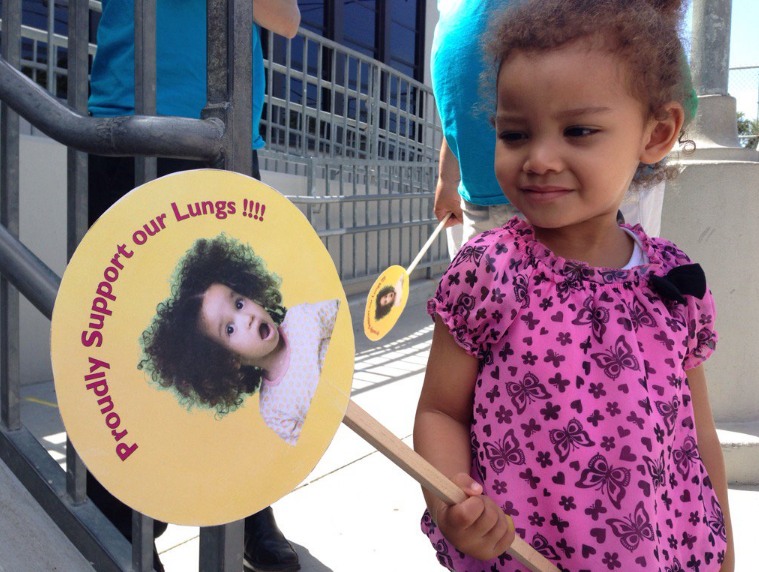
Measure A is More Bad News for Low-Income Communities
Voters Should Reject Measure A – This year San Diego voters have an opportunity to take a critical first step towards bringing San Diego into the 21st century. Right now, San Diego has an outdated and obsolete transportation system. Measure A will perpetuate that system for another 40 years!
Two generations of San Diegans will be stuck with this backward system instead of clean and just transportation if voters don’t give a resounding NO to Measure A on November 8.
While all San Diegans suffer from this outdated and ineffective system, some people are much more affected than others. Measure A doesn’t do much good for anyone in the region but it is particularly bad for those communities that are already inundated by pollution and surrounded by freeways.
Measure A is Bad for South Bay Communities
More Pollution/More Disease – National City, for instance, is one of San Diego’s poorest cities, with a per capita income under $17,000 per year. Over 90% of the residents are persons of color. The community is highly polluted by heavy freeway traffic on I-5, I-15, SR 54, I-805 and its residents suffer multiple health problems caused by vehicle and truck emissions. As a result, CalEnviroScreen, the state’s tracking tool for pollution impacts, includes the west side of National City, Old Town, among the 10% most polluted communities in the state.
San Diego County remains among the top major urban counties in California for poor air quality. The countywide rate of asthma hospitalizations increased from 9 to 10.3 per 10,000 residents aged 0-17. The rate for National City children is twice as high as the county average.
SANDAG’s freeway expansion obsession doesn’t work! – Instead of using this data to inform transportation planning, SANDAG is ignoring it. Our region’s goal should be to avoid adding more pollution to San Diego overall but particularly in the most impacted communities. But no, despite the already high level of traffic pollution, SANDAG will use Measure A funds to expand the I-5 corridor through National City with four new lanes, one general purpose and one express lane in each direction. The agency’s forecast is that this will result in an average of 238,000 vehicle trips per day. While there are different data for current traffic levels, that is an increase of between 17 and 30%.
Moreover, freeway expansion doesn’t relieve congestion or reduce driving – two oft-cited goals of the regional transportation plan. In October 2015 UC Davis’ National Center for Sustainable Transportation reported that “Increased roadway capacity induces additional vehicle miles traveled in the short-run and even more in the long-run.” More roads mean more traffic in both the short- and long-term. Adding 10 percent more road capacity leads to up to 10% more vehicle miles over many years.
Local Infrastructure – Residents living in a low-income neighborhood in the City of San Diego are ten times more likely to be hit by a car than those that live in most other neighborhoods. Southern San Diego residents not only suffer from high levels of air pollution and correspondingly high rates of respiratory disease, these communities, including Barrio Logan, City Heights, National City, Chula Vista and Imperial Beach, live with crumbling infrastructure like broken or nonexistent sidewalks, a lack of crosswalks to safely navigate traffic and a lack of bike lanes common in many traditionally funded communities.
Well-maintained local infrastructure is a key component to an effective transportation system and should be included in transportation funding.
Finally – To be clear, transit and infrastructure funding are included in Measure A. That funding is badly needed and could benefit the most impacted communities and the entire region. But the price is way too high. Miles of freeways will be built in the worst locations before affordable and accessible transit becomes a reality. Measure A forces lower income San Diegans to subsidize use of our roads with higher taxes and damaged lungs. Measure A will increase disease, air and water pollution and traffic congestion.
Don’t support a tax measure that builds on a flawed plan that will not bring San Diego into the 21st century and will make climate change worse. We have come to the decisive moment when scientific reality must trump politics. We are out of time for half measures.
Our communities deserve better, our children deserve better – smart transportation investments that will ease traffic, address climate change, and reduce disease should come first.
Vote No on Measure A.
